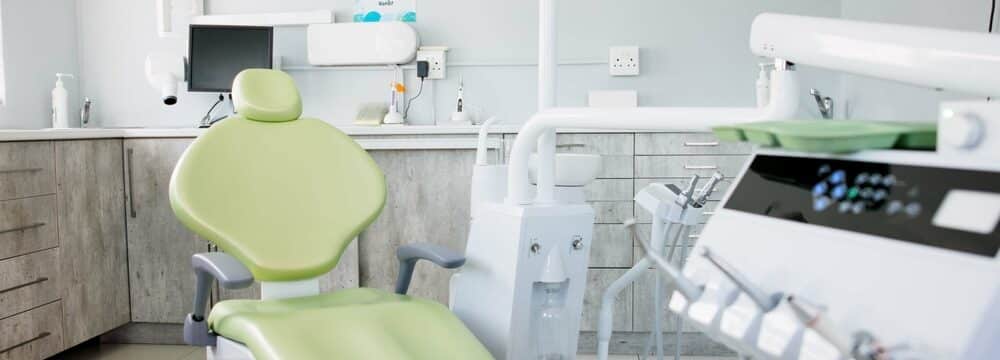Compressed air is the lifeblood of a modern dental clinic. From powering handpieces and suction devices to operating sterilizers and air-water syringes, the entire practice depends on a consistent, clean, and reliable air supply. But as clinics expand to support more operatories and more patients, a single compressor often can’t keep up. That’s where a multi unit dental compressor setup comes in.
By properly designing and tuning a multi-unit system, dental practices can ensure seamless air delivery, reduce downtime, and prepare for future growth. In this article, we’ll explore best practices for optimizing multi-compressor installations—from air distribution and redundancy to space, noise, and scalability.
Why Go Multi-Unit?
As dental clinics grow or add specialty services, the air demand can quickly exceed the capabilities of a single unit. A multi-compressor system offers:
- Redundancy: If one unit fails or needs servicing, the others can maintain system pressure.
- Scalability: Additional compressors can be added as the clinic expands.
- Efficiency: Compressors can alternate duty cycles to reduce wear and increase lifespan.
- Peace of mind: Reduces the risk of costly downtime during busy hours.
TruNorth Components specializes in custom air solutions for dental environments, including modular compressor designs that support redundancy and scalability without compromising hygiene or performance.
Smart Air Distribution
A multi-unit setup only works well when air is distributed efficiently. The key is to ensure balanced delivery to all operatories without pressure drops or bottlenecks.
Best Practices:
- Use a central manifold to merge output from all compressors.
- Size air lines appropriately based on peak demand, not just average usage.
- Place pressure regulators at each operator to fine-tune delivery.
- Include inline filters and dryers to keep the air dry and oil-free, especially in humid climates.
Built-In Redundancy
Redundancy isn’t just about backup—it’s about continuity. In a dental clinic, any interruption to compressed air can delay procedures, frustrate patients, and cause revenue loss.
Tips for Redundant Systems:
- Run at least two compressors on alternating duty cycles.
- Use an intelligent controller that can rotate usage evenly across all units.
- Design with N+1 redundancy in mind: for example, a 3-compressor setup where only two are needed at any one time.
- Choose oil-less designs to eliminate contamination risk and simplify maintenance schedules.
By incorporating redundancy, your multi unit dental compressor setup can maintain uptime even during servicing or unexpected issues.
Space and Noise Considerations
Dental offices are often short on mechanical room space, and nobody wants compressor noise bleeding into treatment rooms.
Optimization Tips:
- Select compact, stackable compressors that conserve floor space.
- Look for models with integrated noise dampening or consider adding sound-insulated enclosures.
- Place compressors away from patient areas—ideally in a vented utility room with proper airflow.
- Add vibration isolators to reduce mechanical transmission through floors and walls.
TruNorth Components offers ultra-quiet, oil-less compressors designed specifically for space-conscious and patient-sensitive environments.
Performance Tuning and Monitoring
Once installed, a multi-compressor system needs fine-tuning and regular monitoring to ensure optimal performance.
Tuning and Maintenance Tips:
- Check system pressure regularly and calibrate regulators if needed.
- Monitor duty cycles and rotate compressors to prevent overuse of one unit.
- Set alarms or auto-shutdowns for over-temperature, low pressure, or filter issues.
- Conduct scheduled maintenance without disrupting operations—enabled by built-in redundancy.
Plan for Scalability
Your clinic may not need six chairs today—but what about in a year? A well-designed compressor system allows for future growth without major redesign.
Scalability Tips:
- Install additional capacity or reserve lines in your manifold.
- Choose modular compressors that can be added without rewiring or plumbing changes.
- Coordinate with your compressor supplier to forecast air demand based on patient volume and equipment upgrades.
With a future-ready approach, you’ll avoid the pain of retrofits or performance drops as your clinic expands.
Final Thoughts
A multi unit dental compressor setup offers powerful advantages for growing dental practices—but only when optimized for air distribution, noise, redundancy, and future needs. With smart design and the right equipment, clinics can maintain flawless performance, meet strict hygiene standards, and avoid the risks of air interruptions. Ready to design or upgrade your system? TruNorth Components offers modular, oil-free compressor solutions engineered specifically for dental applications—with customization options to support your clinic’s unique layout and patient load.
 Designed, Machined & Assembled in America
Designed, Machined & Assembled in America
